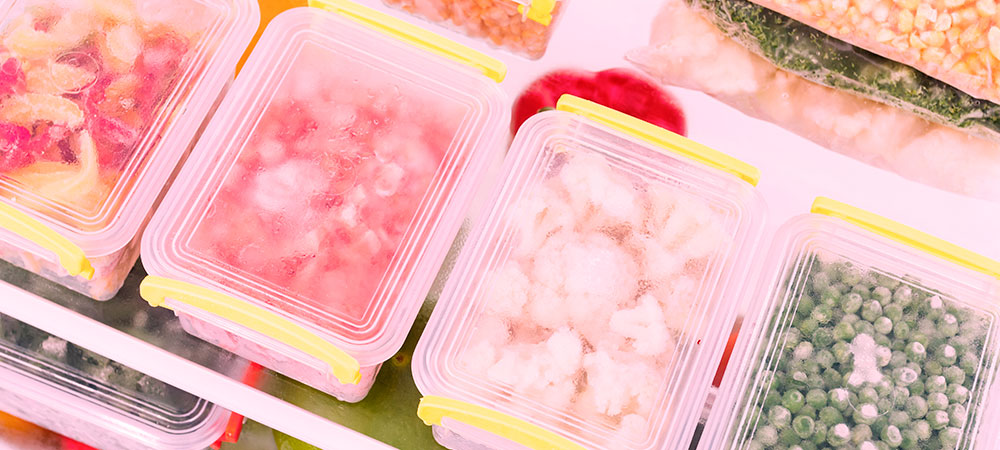
Adopting healthy and balanced eating habits helps provide our body with all the nutritive elements it needs. But above all, the joy of good food makes it possible to take pleasure in discovering new cultures. However, this time dedicated to discovery and sharing leads to an altogether more unpleasant phenomenon : food waste.
The term “food waste” is used when edible food is thrown away. Such waste may occur at each step of the life of a food product, from production to distribution, storage or consumption. Note that not all products get thrown out in the same proportions. Fruit and vegetables are most affected by food waste.
Each of us throws out an average of 20 kg of food waste every year, including 7 kg of products still in their packaging. And this, often, despite our strong desire to become better eco-citizens.
The challenge today therefore consists in committing to consumption habits that are better for ourselves as well as the environment. Our role as consumers complements that of other stakeholders and remains essential in the fight against food waste.
By changing some of our habits, we can individually reduce our contribution to food waste. What reflexes should we adopt ? Here are some possible answers.
The same question comes up every night : what’s for dinner ? After a review of the cupboards and fridge, doubt sets in and we end up ordering a takeaway. This occurs several times a week, which leads us to throw away enormous quantities of food.
A solution exists to avoid such waste : the creation of a weekly menu plan.

This method has several advantages. First of all, a substantial amount of time is saved when shopping. No more going back and forth from one supermarket aisle to the next. Secondly, the idea is to buy only what you need. No unnecessary expenses or storage.
Third positive point, no more daily hassle to figure out what to eat when the time comes…
Finally, this method allows you to create balanced meals throughout the day/week, and thus avoid eating the same thing two days in a row.
Better food preservation helps throw out less and therefore reduce waste.
The objective behind food preservation is to be able to eat a product a few days, months, or even years after it was harvested, slaughtered or processed. If stored properly, wheat or kidney beans can be consumed nearly 30 years after processing. Although nutritional quality and flavours decrease over time, this process aims to preserve the edibility and the taste and nutritional properties of food for as long as possible. All the while preventing the development of the bacteria, fungi and micro-organisms it contains.

Of course, Mister Fridge has left his mark and contributed to major progress in terms of food preservation – thanks to cold temperatures. But this remains a short-term solution and is highly energy-consuming.
However, there are methods based on different techniques : preservation using heat, or cold, but also modified atmosphere, water elimination, or even acidification.
1) Canning is a food preservation process that involves a heat sterilization method, in hermetically sealed containers (glass jars or metal cans). This food preservation method consists in placing the food in air-tight containers, and heating them to a high temperature (generally 110 to 120ºC) to destroy micro-organisms and avoid any subsequent bacteriological contamination. Its greatest asset is that it allows long-term food preservation.
2) Dehydration and lacto-fermentation are ancestral processes which allow certain foods to be stored nearly indefinitely (under specific conditions).
The advantage of dehydration is that is preserves the enzymes, nutrients and vitamins found in food, as long as the latter contains water. It is thus possible to dehydrate fruit, vegetables, aromatic herbs, meat and fish. Once vacuum-packed, certain products such as dehydrated mushrooms can be stored for several months at room temperature ; other products such as meat or fish can be kept in the fridge for nearly a year. The best way to dehydrate your food products is to use a dehydrating oven.
Lacto-fermentation is a good method for preserving garden vegetables other than in the freezer or canned. The idea is to place the vegetable, cut into pieces or not, into a jar with a little salt, cover with water, hermetically seal the jar, and… wait for the lactic ferments naturally found in the vegetables to do their job.
By multiplying and acidifying the environment, they prevent the development of other germs. Shelf life is also long-lasting as a result (several months, sometimes over a year).
3) Using salt, sugar or oil as preservatives aims to make the environment hostile to the development of bacteria, mould and other germs by reducing impact of water. Foods thus gain in added value – and even in flavour – and it is possible to use these preparations for a multitude of recipes (for instance : salted cod, jams, candied lemons in olive oil).
4) Finally, for zero-waste packaging on your trips and hikes, try to make your own beeswax wraps.
Recycling leftovers is an excellent method to avoid food waste. If you care about the environment, your wallet and tastebuds, learn the art of giving your weekly leftovers a second life !
Before you can transform your leftovers, you still have to learn to preserve them. Airtight boxes seems to be the best option to keep your leftover food. Otherwise, freezer bags or film wrap will do the trick. Remember to quickly transfer your leftovers to the fridge, so that they may keep longer. Let them cool first, without ever leaving them more than 2 hours under ambient conditions.

As you have certainly understood, cooking leftovers is an art, that combines creativity and resourcefulness. Keep all the essential ingredients to food recycling in your cupboards : eggs, pie and pizza dough, cheese, broth, tomato coulis, breadcrumbs… and be ready for the quiches, bakes, soufflés, pizzas, soups and omelettes, that can revive food scraps.